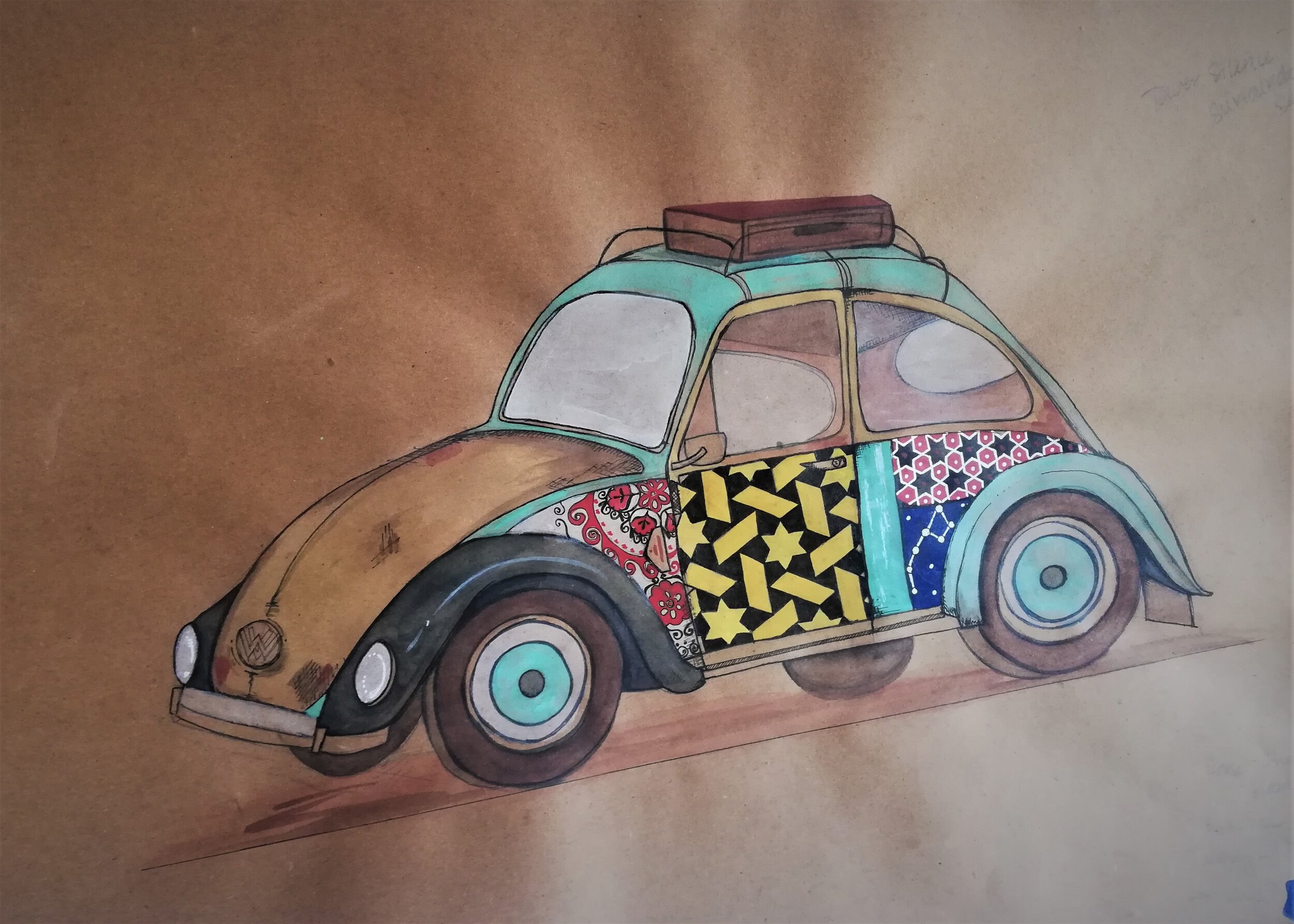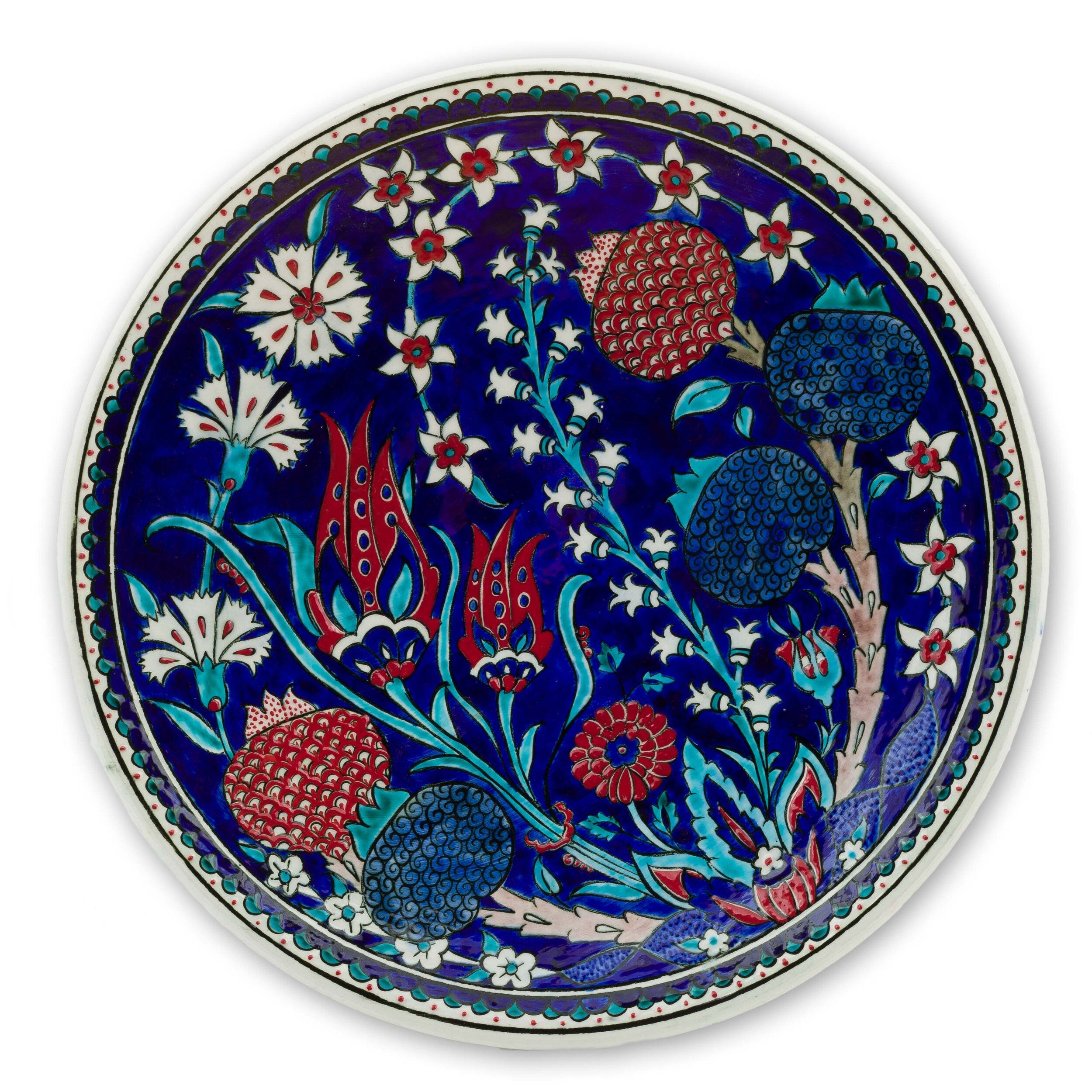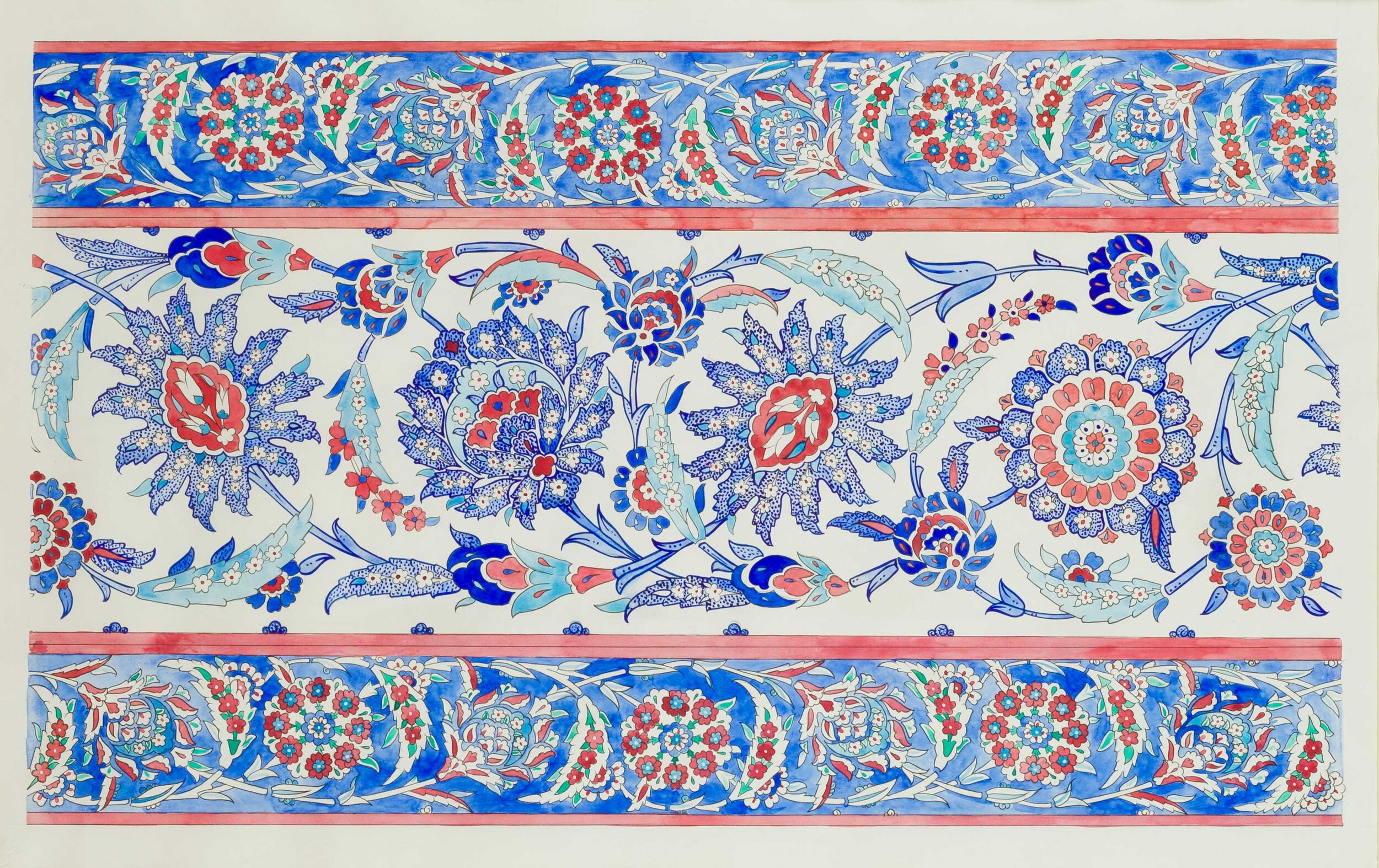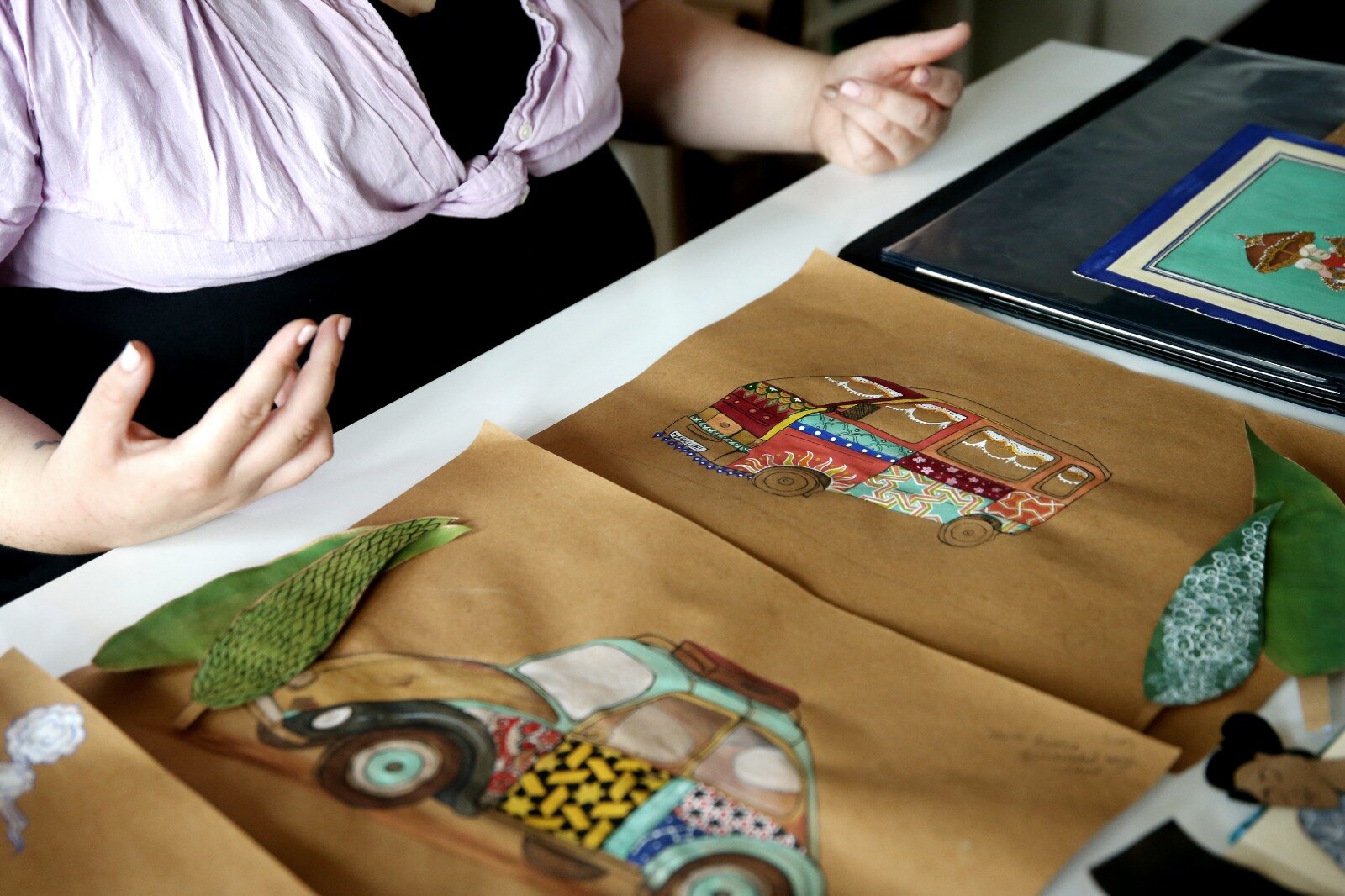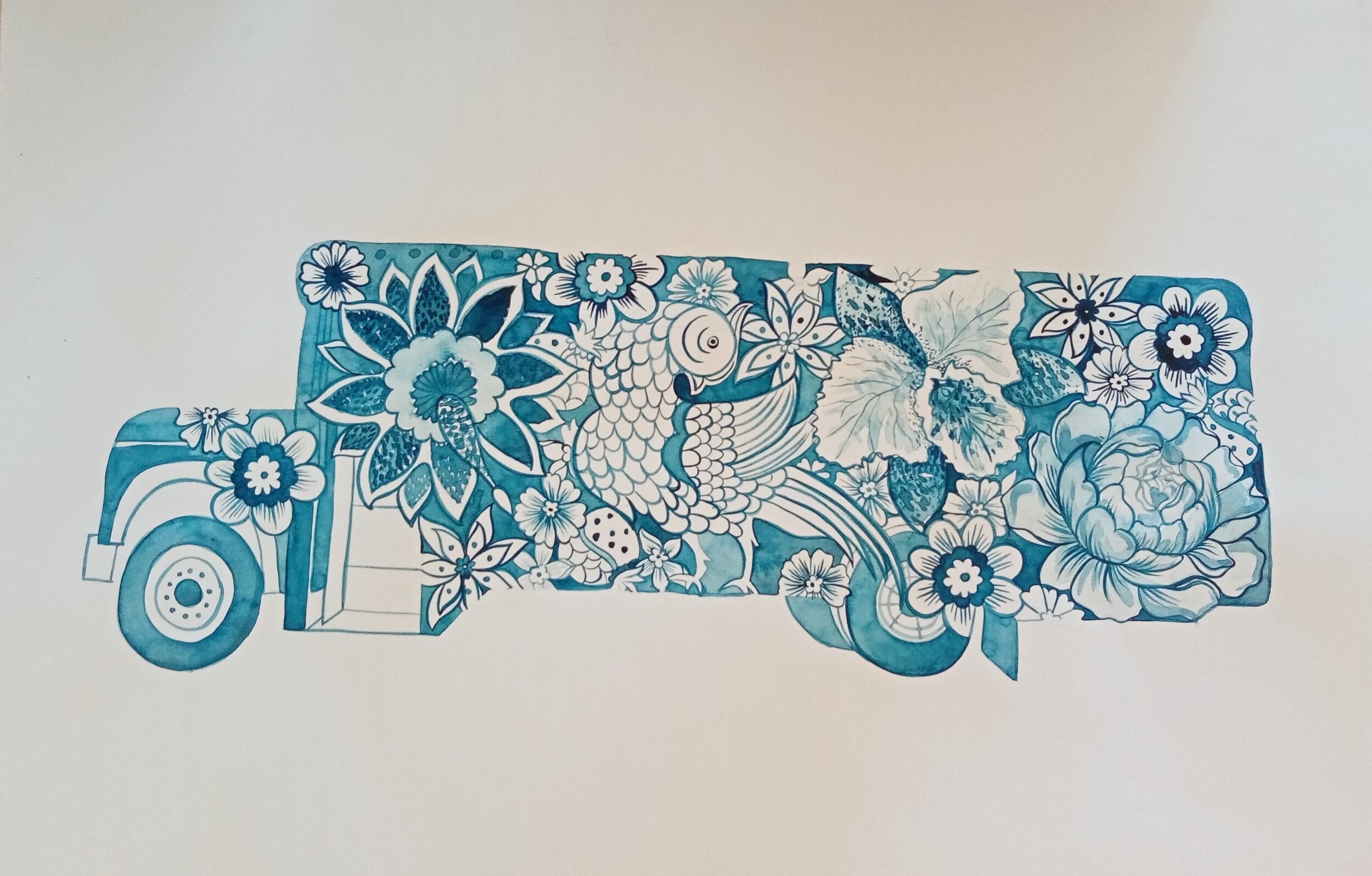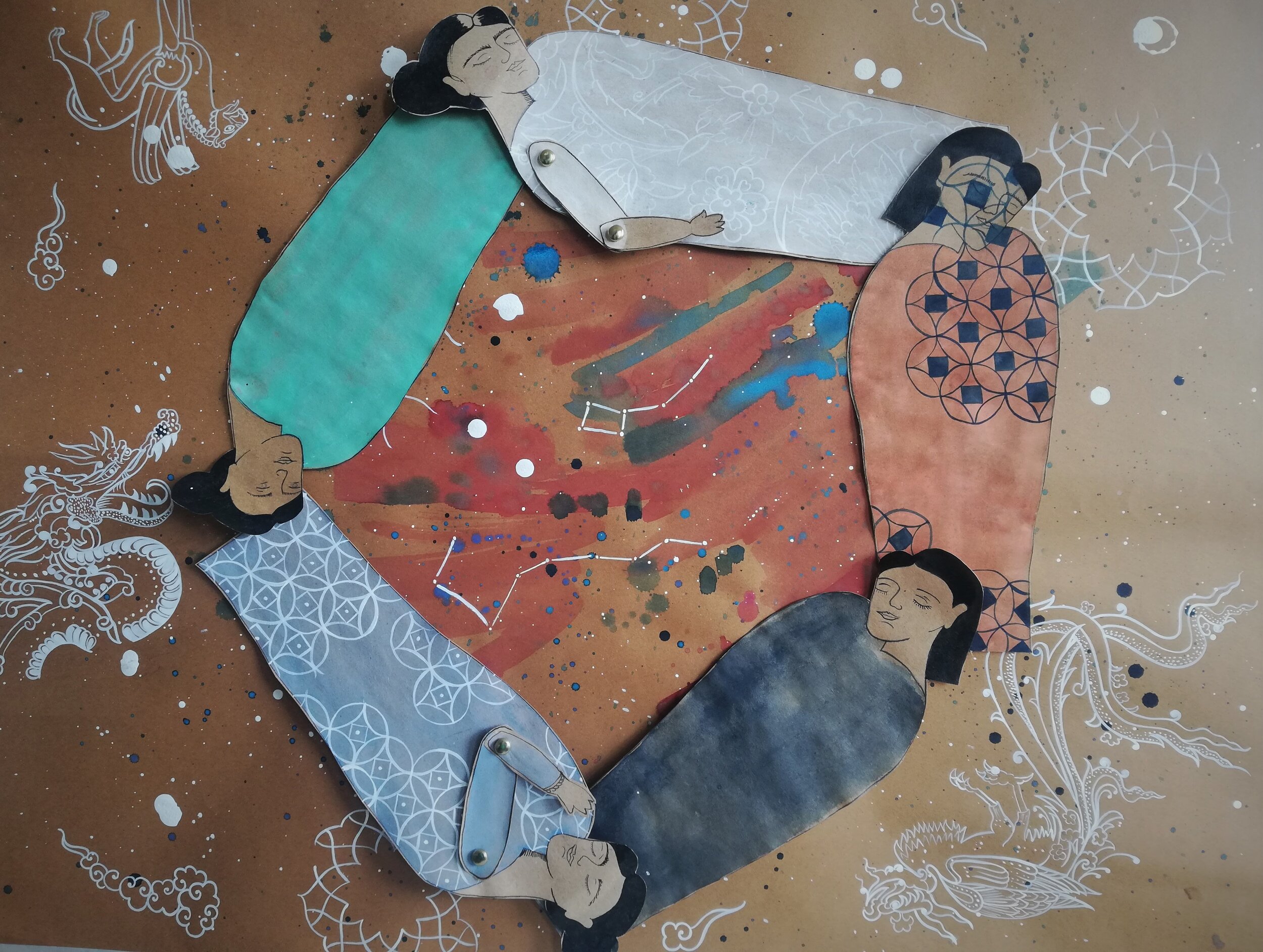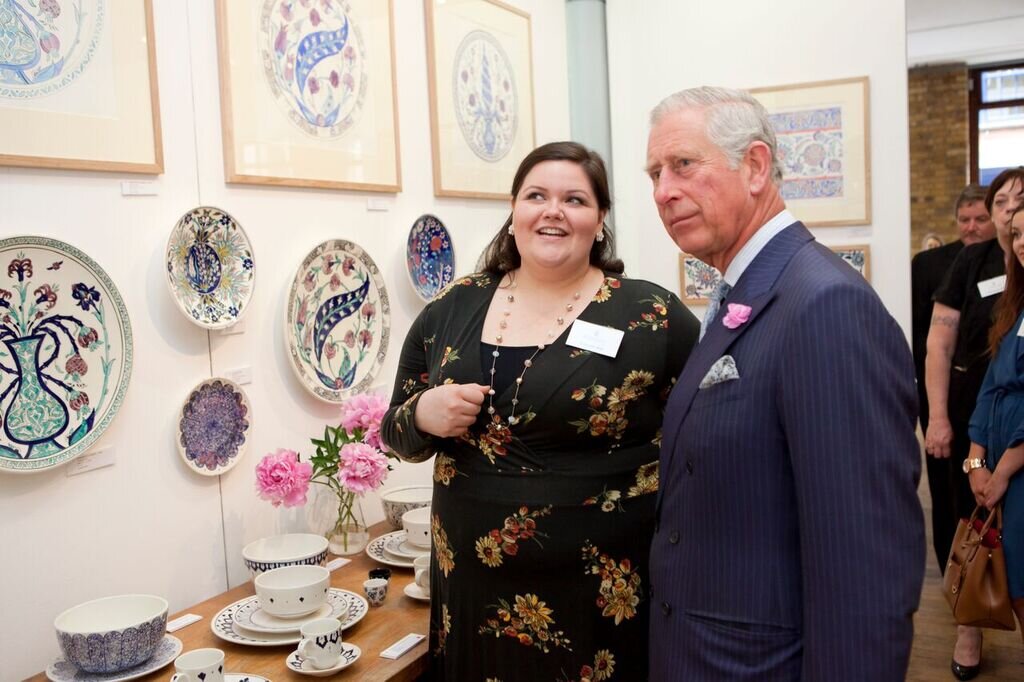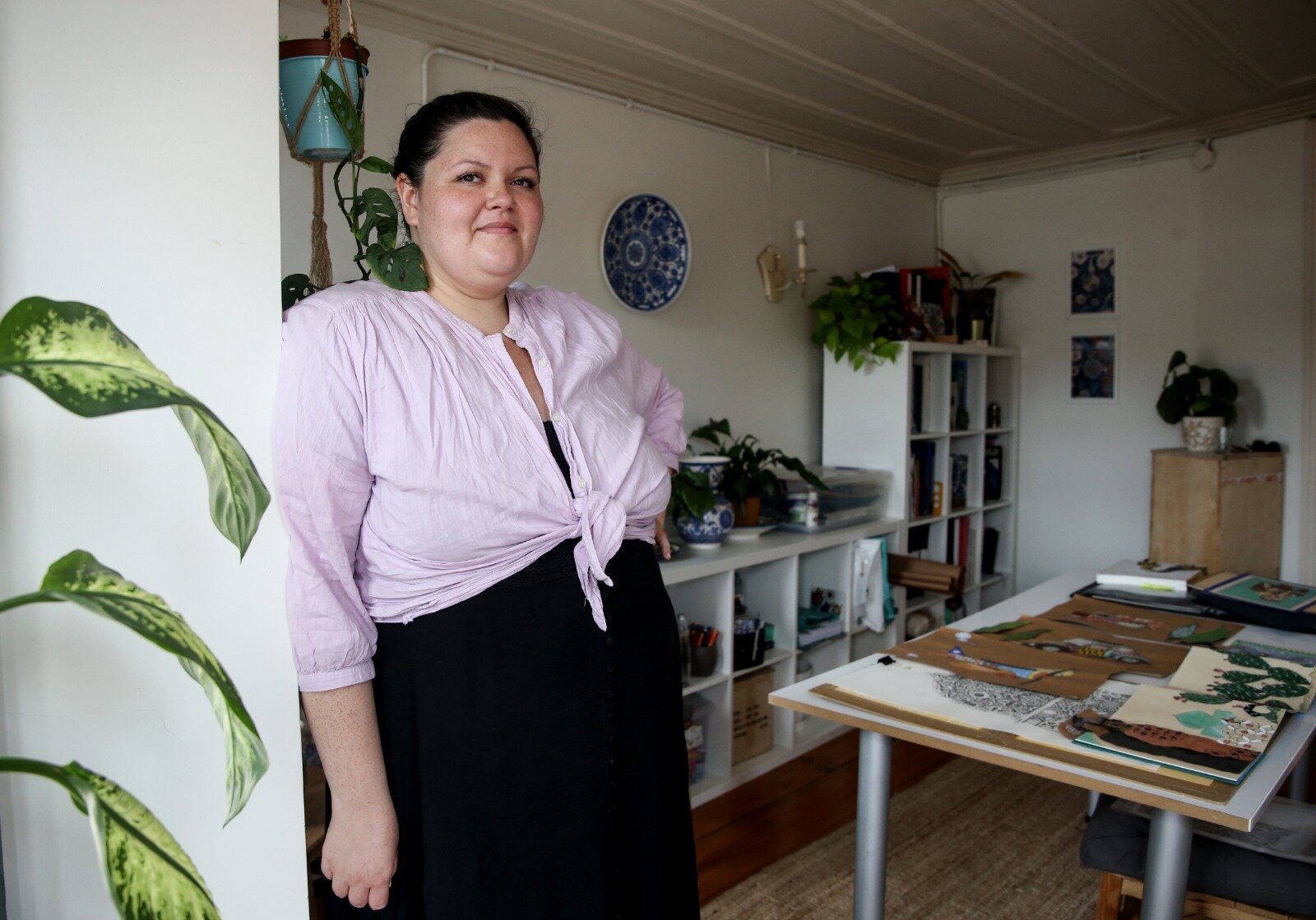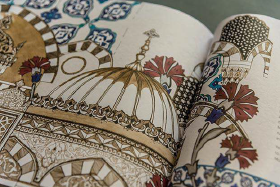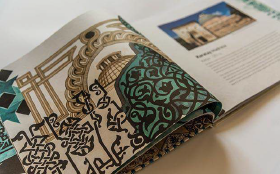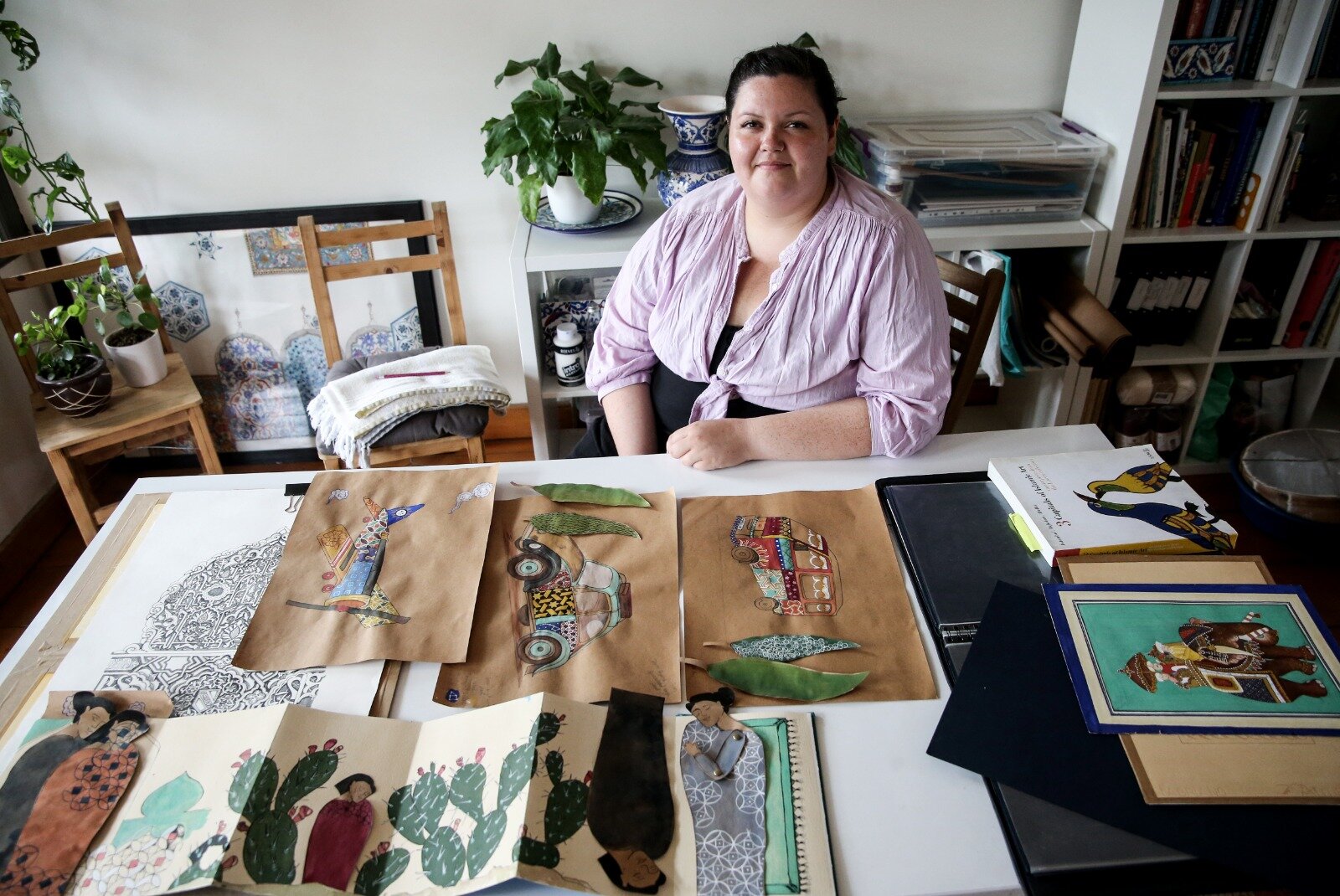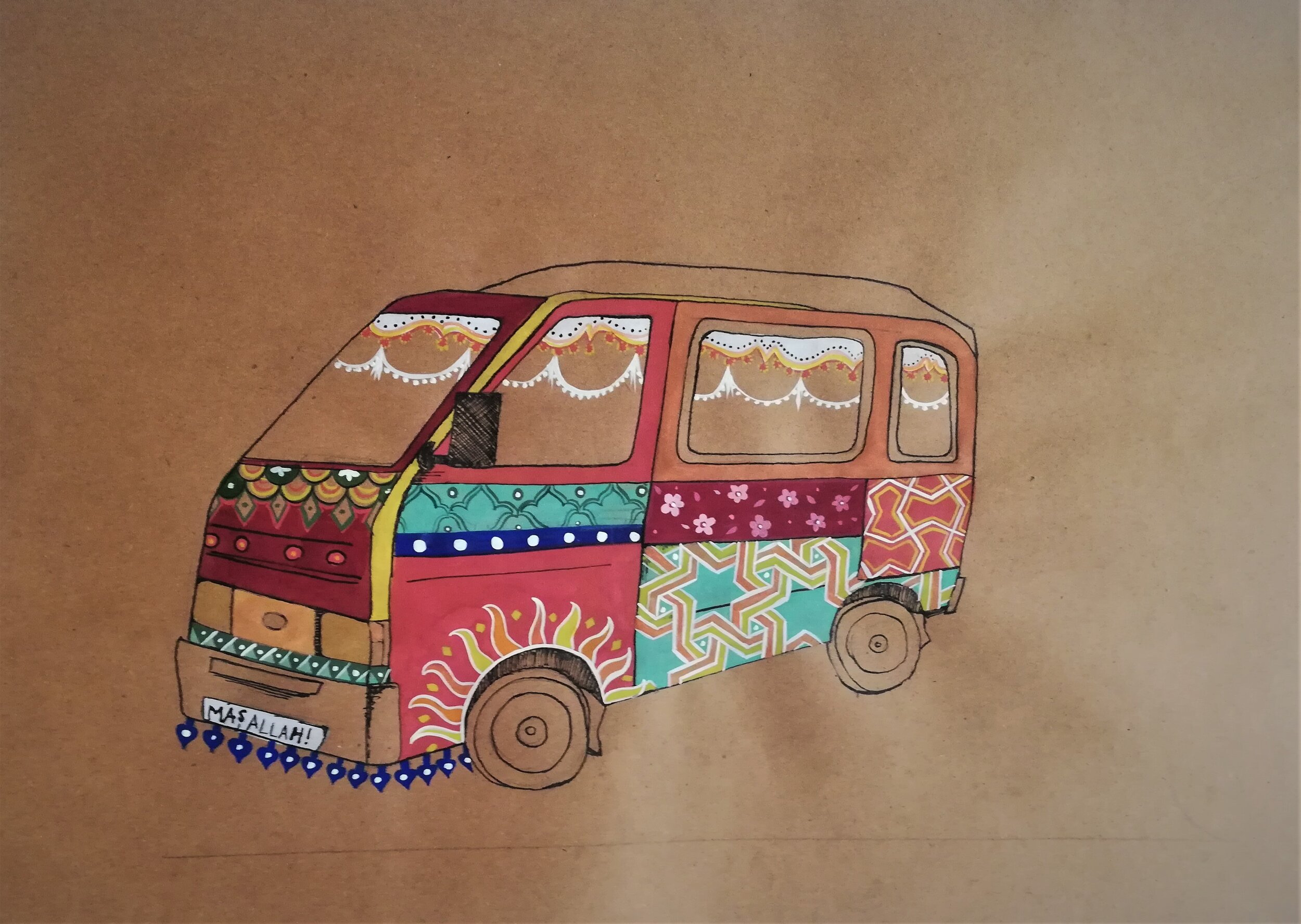"If you are looking for inspiration, always look up" – an advice Laurelie Rae's teacher gave her as a student and something she revisits often when she is looking for inspiration for her work. Every artwork Rae creates is diligently composed. She derives creativeness, not just from her traditional training but also from her family's artistic background and her love of storytelling. Rae creates masterpieces that exude classical aesthetics while blending in her unique style. She often depicts incidences from her personal experiences, folktales, historical events, cultural and gender issues as a means to connect and bring balance to her work.
Laurelie Rae in her studio
Laurelie Rae is an artist, author, and educator. She has been practicing art in Istanbul since 2014. Rae holds a Bachelor of Fine Arts degree from Concordia University in Montreal, Canada. And holds two masters' degrees – one from U.K.'s Prince's Foundation School of Traditional Arts specializing in traditional Iznik ceramics and another in Visual Arts from Sabancı University in Istanbul, Turkey.
Rae with HRH the Prince of Wales at the Princes’s School of Traditional Arts
Rae's areas of interest are Islamic ceramics, drawing, and illustration. She is the author of "Islamic Art & Architecture: Memories of Seljuk & Ottoman Masterpieces."
I recently had the great privilege of interviewing Rae. She talked about her journey to the arts, artistic process, and her ongoing project on Muslim Female Traveler- a miniature painting series that tells the stories of actual female travelers through various colorful vehicles and objects.
What inspired you to study traditional Islamic art?
During my high school years, I participated in a specialized art program. I had an amazing teacher and her art history grabbed me. I was somehow introduced to Islam through Mesopotamian art, which sounds disconnected but there was an interest there and that started when I was 17 years old. I didn't just start doing Islamic art, but it was always in my surroundings. I had to find something to discern my faith through. I did a double major in art history studio art and Persian literature. I am also a big story person. So, there were a lot of things that interested me and it was a gradual process of how I got started in the Islamic arts.
What was it like studying in Turkey?
I think my experience was different than others who come from other countries to study. Most people come for a week or a month and then go back home. It is not as consistent as I did -it was every day, all day for years. I also did a master's here in Turkey. I would say we are lucky to have places like Turkey and Iran. Unfortunately, Iran is difficult to get into because of the different sanctions, so Turkey is more accessible. My teacher in Turkey, however, did not expose me to many locations, she just purely taught me how to make the motifs and compositions. It was me having that art historical mind wanting to research about different things and places. Also writing the book, Islamic Art and Architecture: Memories of Seljuk and Ottoman Masterpiece, was very helpful because I was sent all over Turkey to research.
As an art historian, I believe objects can tell really good stories. Although I may be biased, I believe that art history is one of the best subjects, because art history involves art, culture, history and politics. We don't have any other subject that is as inclusive and holistic. For instance, you can look at one piece and you can understand by the glazes they used, the motifs, what was going on in that period. It is a documentation of the influences at that moment and I find that incredible.
I ended up going to Sabancı University because I wanted to take this kind of traditional education I had and find a way to blend it with new media and so I did videos, experimental photography, and among other things. The purpose of doing a degree at Sabancı University was to get more of the contemporary experience.
How do you come up with your compositions?
Part of the reason why I continued in post-graduate education is that my undergrad was so good – my teachers were phenomenal. When I entered Concordia University, I started as an oil painter. If you are in the painting or studio arts program, you have to draw and one of my teachers opened my eyes to this subject.
Drawing allows the surface to come through whereas in painting you cover up the surface. I predominantly draw and use watercolor. And watercolor is something that is in between drawing and painting in that you can still see the surface of the page. Watercolor alters the surface/object whereas, in painting, the painting almost becomes the object.
Female Muslim Travelers series
I had another professor who said if you are stuck for inspiration, look up. Some time ago, I was down and had deadlines and didn't have the inspiration to do anything. I was just sitting at a park one day and I remembered my teacher's words and moved my eyes up. I saw these birdhouses that looked like it has been knitted with yarn. That's when I realized that you can find inspiration in absolutely mundane things in your surroundings.
I am working on a series of female Muslim travelers. It's based on actual women who were traveling for a purpose. This chauvinism that exists in Muslim culture is also not Islamic, so I specifically went for female Muslim travelers. We have their travel logs, wirings, and letters to one another. For example, the one that is more recent from the 1950s, she ended up getting a divorce from her husband and gave her son to her parents for one year. She then went and figured things out in Italy.
“MashAllah” bus from the Female Muslim Travelers series
The idea for this series came about from Persian literature where you have the book of kings. And I wanted something that speaks to me and I wanted to make a book on queens. Then I realized it took Ferdowsi 30 years to write it. So, a lot of my work is reactionary, and I try to take situations that happened to spin it back on itself.
To see where these things come from, I can see and remember what the initial inspiration was. If you are an artist or a creative person, in the beginning, often times you can see the end, but you don't have the skills or confidence to get to the end. And I guess practicing over time, either you get better or get more confident. I think it happens with your personality too. You accept who you are, your limits, and your abilities and you start working against yourself. And then you can finally embrace what you can do.
What is your advice for students?
Be mindful that most likely your teacher is giving you little bites so that you continue learning, and it's also a test. Whereas if you cannot put up with the small amount that the teacher gives you and you want everything all at one time, it doesn't work that way. There is a reason why things take a while and that is because these kinds of skills take time. A lot of people will come in and it's a disaster as they don't do their homework. If you are not going to put in the effort that you need to continue taking my classes or someone else's, then what are we doing here. So be realistic and if you are interested, find other outlets as well. Read about it, learn about it, watch about it, and practice. If you want it to be the center of your life or a large part of your life, you've got to treat it like that.
My parents were both artists on their own right – my dad used to work with wood and my mom with ceramics. Neither one of them made a living off their art. With my parents, there was never a stress to make money. They enjoyed the process. My ancestors were artists, as well as my parents and so am I. So, I am not saying that you need that to be an artist, but if you are not someone who has that background you have to play catch up a little bit. Again, that is not an issue but be honest with yourself and be realistic. It doesn't mean you can't do great things or do things that you love. It is to hold on to the reigns of the horse and not fall off.
For more information on Rae’s work and classes, please visit her website: https://luluateliers.myshopify.com/ and Instagram: https://www.instagram.com/luluateliers/
All images courtesy of the artist
Gallery of Laurelie Rae’s artwork:
